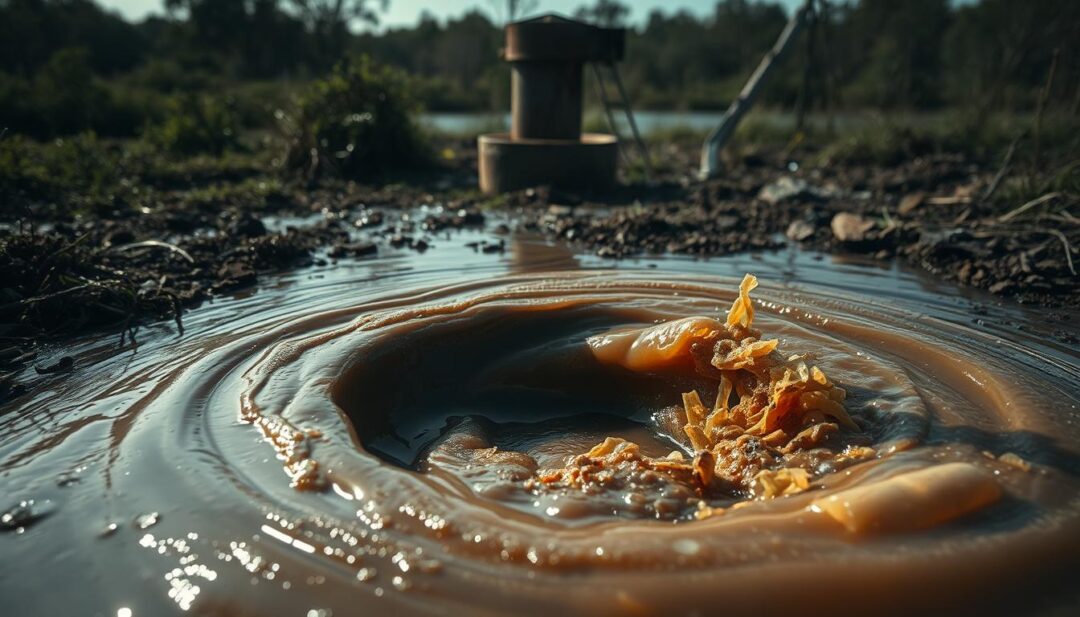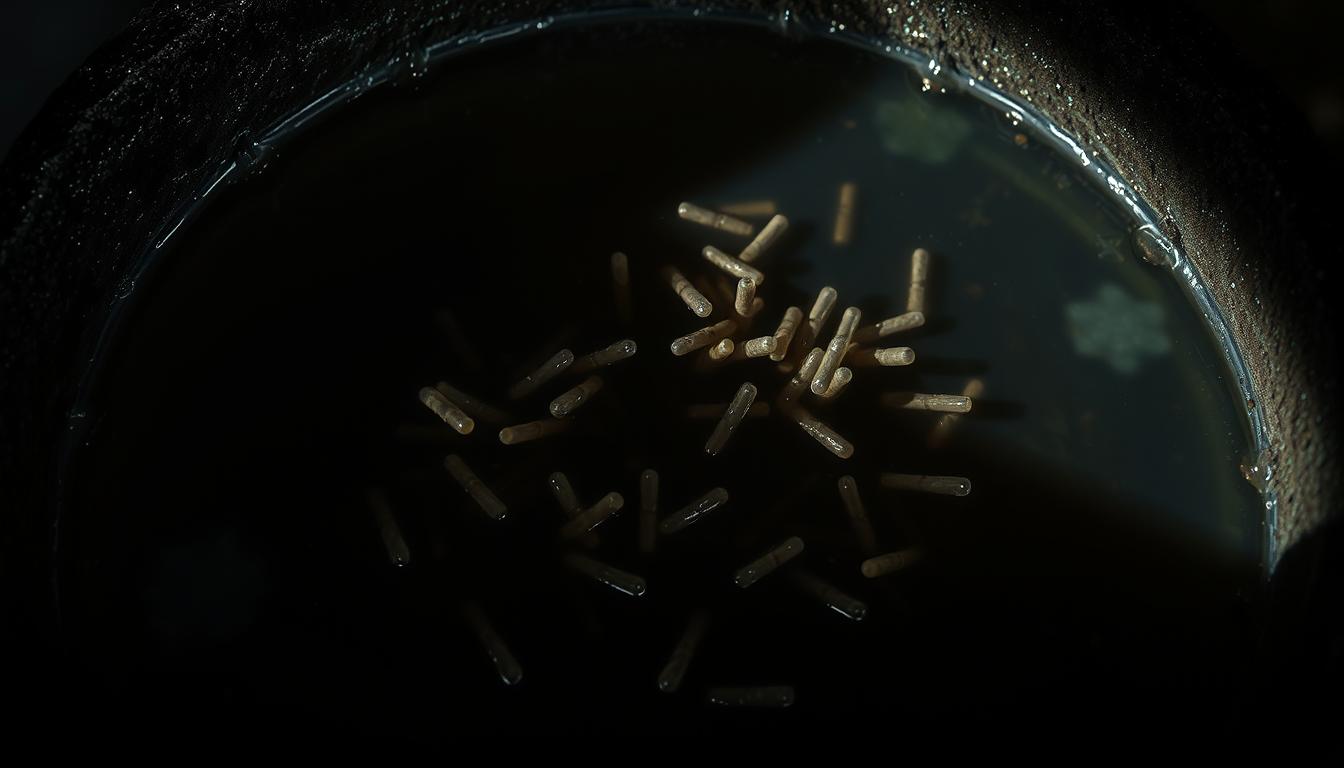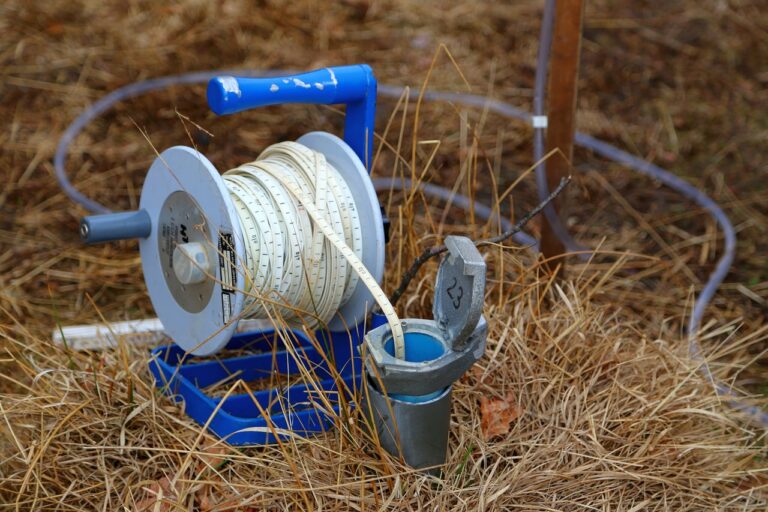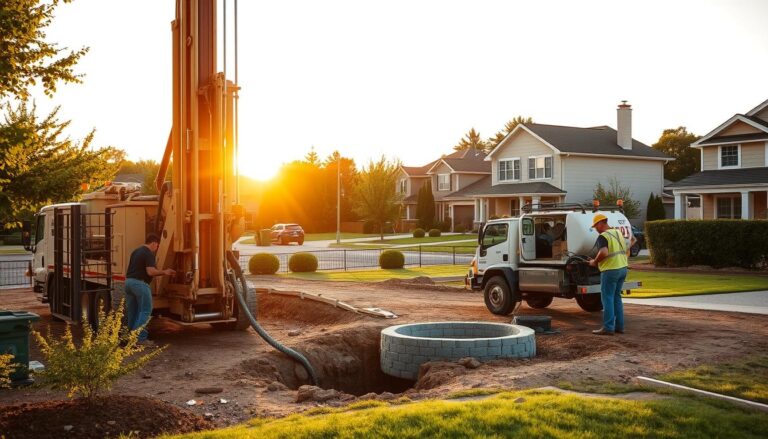Dealing with Coliform Bacteria in Your Well Water
Are you aware of the hidden dangers lurking in your private well water? For households relying on wells, ensuring the water is safe to drink is a top priority.
One of the most common issues facing those with private or shared wells is the presence of coliform bacteria. This can lead to significant health risks, making it crucial to understand how contamination occurs and what can be done to mitigate it.
Key Takeaways
- Understanding the risks associated with coliform bacteria in well water.
- Identifying common sources of contamination.
- Learning methods to test for coliform bacteria.
- Exploring treatment options for contaminated well water.
- Preventive measures to reduce the risk of coliform bacteria.
What Is Coliform in Well Water
Understanding the presence of coliform bacteria in well water is crucial for ensuring the safety of your drinking water. Coliform bacteria are a group of microorganisms that are commonly found in soil, vegetation, and the intestines of animals and humans.
These bacteria are often used as indicators of the overall quality of water. When coliform bacteria are detected in well water, it may signal potential contamination that could pose health risks.
Types of Coliform Bacteria
There are several types of coliform bacteria, including total coliform, fecal coliform, and E. coli. Total coliform bacteria are the broadest category, encompassing a wide range of bacteria. Fecal coliform, a subset of total coliform, is more specific to the intestines of warm-blooded animals. E. coli, a type of fecal coliform, is particularly significant as it’s often associated with human and animal waste.
| Type of Coliform Bacteria | Characteristics | Health Implications |
|---|---|---|
| Total Coliform | Found in soil, vegetation, and intestines | Indicates potential contamination |
| Fecal Coliform | Subset of total coliform, specific to intestines of warm-blooded animals | Suggests presence of pathogens |
| E. coli | Type of fecal coliform associated with human and animal waste | Potential for severe health risks, including gastrointestinal illness |
Why Coliform Bacteria Matter in Drinking Water
The presence of coliform bacteria in drinking water is a concern because it can indicate potential contamination with pathogens that cause waterborne illnesses. While coliform bacteria themselves are generally not harmful, their presence suggests that other, more harmful bacteria, viruses, or parasites could also be present in the water.
Regular testing for coliform bacteria, including the coliform test in well water, is essential for early detection of potential issues. If contamination is found, addressing it promptly can prevent health problems associated with coliform contamination in well water.
Health Risks of Coliform Bacteria Exposure
Understanding the health risks associated with coliform bacteria in well water is crucial for maintaining a safe drinking water supply. While most coliforms are not harmful, certain strains like E. coli O157:H7 can cause severe health issues, particularly in vulnerable populations such as children, the elderly, and those with compromised immune systems.
Common Symptoms of Waterborne Illness
Exposure to coliform-contaminated water can lead to a range of symptoms, from mild gastrointestinal discomfort to severe infections. Common symptoms include diarrhea, abdominal cramps, nausea, and vomiting. In severe cases, these symptoms can lead to dehydration and more serious complications. If you suspect that your well water is contaminated, it’s essential to seek medical attention if you or your family members experience these symptoms.
For more information on addressing potential contamination issues, you can refer to resources on how to fix sewage smell in well, which may be related to coliform presence.
High-Risk Individuals and Special Concerns
Certain individuals are at a higher risk of developing severe health issues due to coliform bacteria exposure. These include pregnant women, young children, and people with weakened immune systems due to chronic illnesses or undergoing medical treatments. It’s crucial for these high-risk individuals to take extra precautions to ensure their drinking water is safe. Regular testing for coliform presence in well water is a vital step in protecting these vulnerable populations.
Common Sources of Coliform in Well Water
Coliform contamination in well water can arise from a combination of environmental pathways and well system vulnerabilities. Understanding these sources is crucial for well owners to take appropriate measures to safeguard their drinking water.
Environmental Contamination Pathways
Environmental factors play a significant role in coliform contamination of well water. Runoff from woodlands, broken septic systems, and rainwater carrying animal feces through the soil can all contribute to the presence of coliform bacteria in well water. For more detailed information on sources of coliform bacteria, you can visit this resource.
Well System Vulnerabilities
Well system vulnerabilities can also lead to coliform contamination. Two significant factors are structural defects and improper well location.
Structural Defects
Structural defects in wells, such as cracked casings or poorly sealed well caps, can allow surface contaminants to enter the well. Regular inspections can help identify these issues before they lead to contamination.
Improper Well Location
Wells located near potential sources of contamination, such as septic systems or agricultural runoff areas, are at a higher risk of coliform contamination. Proper siting of wells is critical to minimizing this risk.
| Source | Description | Risk Level |
|---|---|---|
| Runoff from woodlands | Animal feces carried through rainwater | High |
| Broken septic systems | Direct contamination from sewage | Very High |
| Structural defects | Cracked casings or poorly sealed caps | High |
Detecting Coliform Bacteria in Your Well
Coliform bacteria detection is a vital step in maintaining the quality of your well water. Regular testing helps identify potential contamination issues before they become serious health risks.
Warning Signs of Possible Contamination
While regular testing is crucial, being aware of the warning signs of contamination can help you identify potential issues early. These signs include changes in water color, odor, or taste, as well as nearby construction or flooding that could impact your well’s integrity. If you notice any of these changes, it’s essential to test your water promptly.
Recommended Testing Frequency
The EPA recommends testing well water for total coliform bacteria at least once a year. This frequency helps ensure that any contamination is detected early, reducing the risk of waterborne illnesses. For more information on what to do if your water test comes back positive, you can visit this resource for guidance on combating coliform bacteria.
Proper Sampling Techniques
Proper sampling techniques are critical for accurate test results. To ensure your sample is valid, follow these steps:
- Use a sterile container provided by a certified laboratory.
- Run the water for 2-3 minutes before sampling.
- Avoid touching the inside of the container or lid.
- Fill the container to the recommended level.
- Seal the container tightly and label it correctly.
| Testing Frequency | Recommended By | Purpose |
|---|---|---|
| Annually | EPA | Total Coliform Bacteria Detection |
| After Flooding | Local Health Departments | Contamination Check Post-Flooding |
| After Nearby Construction | Well Owners | Precautionary Measure |
Testing Methods for Coliform in Well Water
Accurate detection of coliform bacteria in well water is crucial for ensuring the safety of your drinking water. Testing for coliform is a fundamental step in assessing the quality and safety of your well water supply.
Home Testing Kits
Home testing kits are available for detecting coliform bacteria in well water. These kits are often less expensive and provide quicker results compared to laboratory testing. However, their accuracy can vary, and they might not be as reliable as professional laboratory analysis.
Key considerations for home testing kits include:
- Ease of use
- Cost-effectiveness
- Speed of results
Professional Laboratory Analysis
For more accurate and reliable results, professional laboratory analysis is recommended. Laboratories use standardized methods to detect and quantify coliform bacteria, providing a more comprehensive assessment of your well water quality.
Benefits of laboratory analysis include:
- High accuracy
- Quantitative measurements
- Detailed reporting
Understanding Test Results
Once you’ve conducted a test, understanding the results is crucial for determining the next steps. Test results can be either positive or negative, and may include quantitative measurements.
Positive vs. Negative Results
A positive result indicates the presence of coliform bacteria, suggesting potential contamination. A negative result means no coliform bacteria were detected, indicating the water is likely safe in terms of coliform contamination.
Quantitative Measurements
Some tests provide quantitative measurements, such as the number of colony-forming units (CFU) per 100 mL of water. This information can help assess the level of contamination.
| Test Result | Interpretation | Recommended Action |
|---|---|---|
| Positive | Coliform bacteria detected | Investigate source, consider shock chlorination |
| Negative | No coliform bacteria detected | Continue regular testing |
Understanding your test results is the first step in ensuring your well water is safe to drink. If you’re unsure about the results or their implications, consulting with a water quality professional is advisable.
Immediate Actions After a Positive Coliform Test
If your well water tests positive for coliform bacteria, taking prompt action is essential to prevent health risks. The presence of coliform bacteria indicates potential contamination that could lead to waterborne illnesses.
Safe Water Alternatives
Until the issue is resolved, it’s vital to use safe alternatives for drinking, cooking, and personal hygiene. Boiling water is a simple and effective method to kill bacteria. Bringing water to a rolling boil for one minute can significantly reduce the risk of waterborne diseases.
Alternatively, using bottled water or water from a trusted source is advisable. If boiling or alternative sources are not feasible, consider using water disinfection tablets or filters that are certified to remove coliform bacteria.
| Safe Water Alternatives | Description | Effectiveness Against Coliform |
|---|---|---|
| Boiling Water | Bring water to a rolling boil for 1 minute | Highly Effective |
| Bottled Water | Use water from a trusted, certified source | Effective |
| Disinfection Tablets | Use tablets specifically designed for water disinfection | Effective |
When to Contact Health Authorities
If your well water is contaminated with coliform bacteria, it’s essential to notify your local health department. They can provide guidance on the necessary steps to take and help assess the risk to public health.
Contact health authorities immediately if you experience symptoms of waterborne illness, such as diarrhea, vomiting, or stomach cramps, after consuming potentially contaminated water.

Shock Chlorination: Step-by-Step Process
Shock chlorination is a widely recommended technique for treating coliform contamination in well water systems. This process involves introducing a high concentration of chlorine into the well, circulating it throughout the system, and then flushing it out to remove the chlorine and contaminants.
Required Materials and Safety Equipment
Before initiating shock chlorination, it’s essential to gather the necessary materials and safety equipment. These include:
- A chlorine product (such as bleach or a commercial well chlorination product)
- A bucket or container for mixing the chlorine solution
- A hose or piping to circulate the chlorinated water
- Protective gear (gloves, goggles, and a mask)
Using the right safety equipment is crucial to avoid exposure to high concentrations of chlorine, which can be hazardous to health.
Calculating the Proper Chlorine Dosage
Calculating the correct amount of chlorine to use is vital for effective shock chlorination. The dosage depends on the volume of water in the well and the desired chlorine concentration. A common recommendation is to achieve a chlorine concentration of 50-100 mg/L (parts per million) in the well water.
| Well Diameter (inches) | Volume of Water (gallons per foot) | Chlorine Dosage (gallons of bleach per 100 feet) |
|---|---|---|
| 6 | 1.5 | 0.18 |
| 12 | 6.0 | 0.72 |
| 24 | 23.5 | 2.82 |
The table above provides a guideline for calculating the chlorine dosage based on the well diameter and depth.
Treatment Procedure
The treatment involves mixing the calculated amount of chlorine with water to create a solution, which is then introduced into the well. The chlorinated water is circulated throughout the well system to ensure thorough disinfection. After allowing the chlorine to act for a recommended period (usually several hours or overnight), the well is flushed until the chlorine odor is no longer detectable.
“Shock chlorination is an effective method for eliminating coliform bacteria from well water, but it requires careful planning and execution to ensure its success.”
Post-Treatment Testing
After shock chlorination and flushing, it’s crucial to test the well water again for coliform bacteria to confirm that the treatment was successful. This step ensures the water is safe for consumption and other uses.
By following these steps, well owners can effectively use shock chlorination to treat coliform contamination and maintain the quality of their well water.
Advanced Treatment Systems for Persistent Coliform Problems
Advanced treatment systems provide a robust defense against persistent coliform bacteria in water. When conventional methods fail to resolve the issue, these systems offer a reliable solution to ensure safe drinking water.
Continuous Chlorination Systems
Continuous chlorination systems are an effective method for controlling coliform in well water. These systems automatically dispense chlorine into the well water, ensuring consistent disinfection. They are particularly useful for wells with recurring contamination issues.
UV Disinfection Technology
UV disinfection technology is another advanced solution for eliminating coliform bacteria in water. This method uses ultraviolet light to kill bacteria, viruses, and other pathogens. UV systems are low maintenance and provide a chemical-free alternative to chlorination.
Reverse Osmosis and Filtration Options
Reverse osmosis and other filtration systems can also be effective in removing coliform bacteria from well water. These systems work by forcing water through a semi-permeable membrane, trapping bacteria and other contaminants. While effective, they may require regular maintenance to ensure optimal performance.
By implementing these advanced treatment systems, homeowners can significantly reduce the risk of coliform in well water, ensuring a safer and healthier drinking water supply.
Preventing Future Coliform Contamination
Preventing coliform contamination in well water requires a multi-faceted approach that includes regular maintenance, proper landscaping, and effective septic system management. By adopting these preventive measures, you can significantly reduce the risk of coliform bacteria in your well water.
Well Maintenance Schedule
Regular well maintenance is crucial for ensuring the water remains safe to drink. This includes inspecting the well casing, cap, and surrounding area for any signs of damage or contamination. It’s recommended to inspect your well at least once a year, and after any significant weather events. Regular testing for coliform bacteria should also be part of your maintenance schedule, ideally conducted every 6 to 12 months.
Proper Landscaping Around Wells
The area around your well should be properly landscaped to prevent surface contamination. This involves ensuring the well is located at a safe distance from potential contamination sources, such as septic systems and agricultural runoff. Grading the land to slope away from the well can help prevent surface water from accumulating around the wellhead. Additionally, keeping the area around the well free of debris and vegetation can reduce the risk of contamination.
Septic System Management
Effective management of your septic system is vital in preventing coliform contamination. Regular inspections and pumping of the septic tank (typically every 3 to 5 years) can help prevent system failures that could contaminate your well water. It’s also important to be mindful of what you dispose of through your septic system, avoiding the disposal of harsh chemicals or excessive waste.
| Prevention Measure | Description | Frequency |
|---|---|---|
| Well Inspection | Inspect well casing, cap, and surrounding area | Annually |
| Coliform Testing | Test for coliform bacteria in well water | Every 6-12 months |
| Septic System Maintenance | Inspect and pump septic tank | Every 3-5 years |

When to Repair or Replace Your Well
When coliform bacteria persist in well water despite treatment, it’s crucial to assess whether your well needs repair or replacement. Persistent contamination can be a sign of a more significant issue with your well.
Signs of Irreparable Contamination
Several indicators suggest that your well may be irreparably contaminated. These include:
- Recurring presence of coliform bacteria despite repeated shock chlorination treatments
- Nearby contamination sources, such as septic systems or agricultural runoff, that are difficult to mitigate
- Structural issues with the well, such as casing damage or improper sealing
Finding Qualified Well Contractors
If you’ve determined that your well needs repair or replacement, it’s essential to find a qualified contractor. Consider the following:
| Qualification | Description |
|---|---|
| Licensing | Ensure the contractor is licensed to work on wells in your state |
| Experience | Look for contractors with experience in well repair and replacement |
| Reputation | Check online reviews and ask for references to gauge the contractor’s reputation |
By understanding the signs of irreparable contamination and knowing how to find a qualified well contractor, you can make an informed decision about repairing or replacing your well.
State and Federal Regulations for Private Wells
Compliance with state and federal regulations is essential for private well owners to avoid health risks associated with contaminated water. Private wells are not regulated by the Safe Drinking Water Act (SDWA), but guidelines and recommendations from the EPA still provide a framework for safe drinking water.
EPA Guidelines for Drinking Water
The Environmental Protection Agency (EPA) sets standards for drinking water quality under the SDWA, although these standards directly apply to public water systems. However, private well owners can follow EPA guidelines for coliform levels in well water as a benchmark for safety. The EPA recommends regular testing for total coliform and E. coli, among other contaminants.
Local Health Department Resources
In addition to EPA guidelines, local health departments often provide resources and regulations specific to the area. These can include guidance on well construction, testing schedules, and coliform removal from well water. Private well owners should contact their local health department to understand the specific requirements and recommendations in their area.
Conclusion
Dealing with coliform bacteria in well water requires prompt action, proper treatment, and preventive measures to ensure safe drinking water. Throughout this article, we’ve explored the risks associated with coliform in well water, including the potential health impacts and common sources of contamination.
Understanding the importance of regular coliform test in well water is crucial for maintaining water quality. By detecting coliform bacteria in water, you can take immediate actions to address the issue, such as using safe water alternatives and performing shock chlorination.
For persistent problems, advanced treatment systems like continuous chlorination and UV disinfection can provide effective solutions. Preventing future coliform contamination involves regular well maintenance, proper landscaping, and septic system management.
By following the guidelines outlined in this article and staying informed about state and federal regulations for private wells, you can protect your well water from coliform bacteria and ensure a safe drinking water supply.







